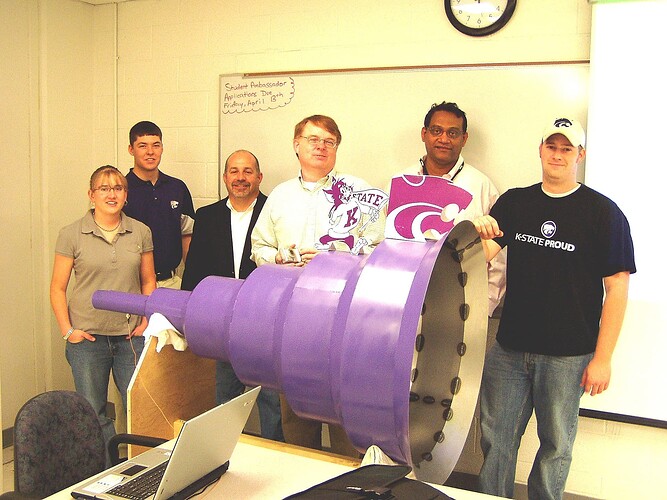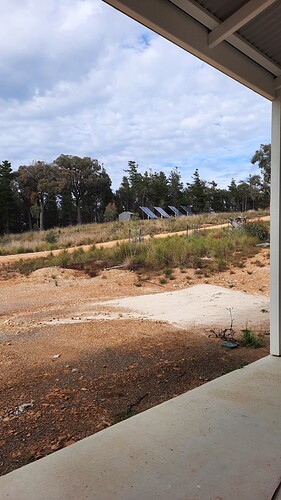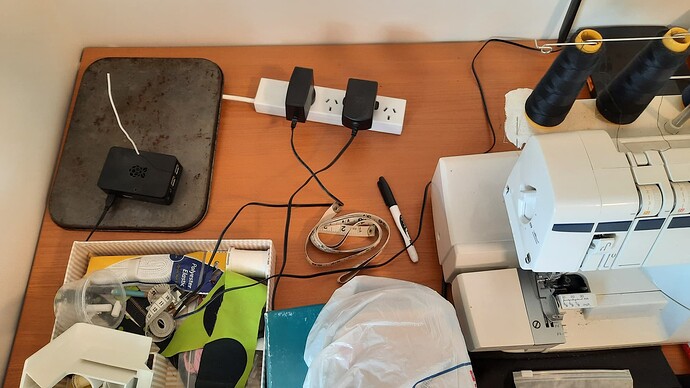The new location looks good, but it also appears you still have an interfereence problem.
Now that it’s run another day, are you still seeing RSSI dropouts?
Have you considered using a directional antenna? Something like this How to Make a Cantenna: 10 Steps (with Pictures) - wikiHow. There are many sources of information on this. It is easy to build and you get some gain on the signal as well as directional properties. The signals next door will have very little influence.
Also check out this guy’s channel andrew mcneil - YouTube
Have you considered whether that design and the dimensions suggested are appropriate for a 434 MHz signal? The wavelength of the ISM band is more than 5 times longer than the lowest Wi-Fi frequency.
Not really. It was more a suggestion to spark some alternative research ideas. I think the guy has some antennas for 433Mhz as well but I am not sure about that.
The problem is at 434 MHz. At a quick guesstimate, the “Cantenna” for 434 MHz would be approaching the size of a 45 gallon oil drum in order to be effective.
I used a cantenna (Birds Custard tin) to great effect at 2.4Ghz for WiFi but it’s not feasible at 433Mhz. A better way is using a Yagi 433 MHz Tape Measure Antenna -suits UHF Transmitter Tracking! : 29 Steps - Instructables
On a somewhat different note…
That made me think of this:
Ref:
This one’s a Wi-Fi antenna. It’s large because they were interested in building the largest known antenna based on the standard cantenna design, using some of the same methodologies.
It has a gain of 20 dBi at 2.4 GHz.
Is there foliage or anything like that in the new line of sight between the antennas?
Is it just chance that the signal was relatively steady except when people are more likely to be moving about between 7 am & 3 pm?
The RSSI going up, but that’s when the breaks occur, makes me think there’s something moving that’s causing multi-pathing, and reinforcing the signal one moment and cancelling it the next.
Scale that up to 434 MHz? 
Doing the maths:
f = 434 MHz
λ = 0.691 m
can diameter ≥ λ/2 = 345 mm
can length > 3λ/4 = 518 mm
OK, not quite 45 gallon oil drum size, but certainly heading in that direction.
Other than the lightly constructed external wall, this is the line of sight to the power shed from the emon base location. The external wall is of stud construction, plasterboard inner lining with timber weatherboard external cladding. There is a semipermeable vapour barrier incorporated behind the external cladding.
The emon base is located on my wife’s sewing table. Last time I surveyed the house for radio signals, this was the best location with the fewest dropouts.
Was there a weather-related change. or was that room in use, during the period of the drop-outs?
Have you tried a ground plane at the receiver (emonBase)? That should give you another 6 dB, but it won’t help if it is a multi-path problem.
It’s also worth moving the Base a few centimetres, to see the effect that might have.
That is the baking tray under the emon base that I appropriated from the kitchen a while back - which I have just removed a couple of times and not been able to notice a change - if anything having the baking tray in place might actually be making things slightly worse.
Is the arrangement correct? I thought the ground plane did not need a hard connection and that it was capacitively coupled.
I don’t think he’s got a multi-path issue as his system worked OK for 2 years
until the new radio-based internet service was installed.
It sounds as if the new radio-linked internet service is interfering with his UHF data link.
Looking at the graph, the dropouts are minimal during the late night and early morning hours,
then they increase during the hours when internet activity is likely to be higher.
Later, (after ~1800L) more dropouts. Internet activity after the evening meal. perhaps?
@Jaddache, Is there any correlation between the two? (dropouts and internet activity)
Yes.
Correct. It is indeed capacitively coupled.
The initial problem was the mast for the Internet service was installed too close to the emonTx’s antenna.
@Jaddache then moved the latter a few feet down the roof, and got drop-outs but not when human activity - internet or movement - was unlikely.
If a reflecting object is causing multi-path and gets moved, that would surely be one explanation for drop-outs? Not that I rule out anything, including Internet activity.
Coming back to Brian’s and DJH’s questions about the service the new mast provides, what are the “two internet radios” and are you distinguishing between a modem, a router and a switch, and how does the service travel between the shed and the house?
Just to confirm, the plasterboard has paper facings rather than foil? No insulation in the wall? (especially not foil-faced sheets ![]() )
)
It has been fine here for the past three days.
The room where the emon base is located is our study and it has been occupied a lot lately with working from home during COVID restrictions.
It’s hard to say. I don’t think so. I have been using the internet for the past 4-6 hours and the longest drop out has been approximately 2 minutes. There have been 20min drop outs earlier in the day when the internet was not being used.
The big antenna is pointed to the ISP’s tower approximately 4 km away. The small antenna is one end of a point to point radio link that connects the internet service to the house. The two radios on the shed are connected via a single cat 5 cable. At the house there is another small antenna that is connected to the WAN port on the router (Cambium Networks cnPilot r195 Series Wi-Fi Router).
There is insulation in the wall - glass fibre I think. No foil.
Just to be sure I took the emon base outside this morning for 30 min or so. There was no significant improvement in the radio signal and it still experienced a 5 minute dropout.
Does your emonTx have a RFM69CW radio (there’s a ‘Learn’ page to identify it if you’re not sure, most emonTx V3.4s do have it, but I have an early one with a RFM12B) and how is it powered - via 5 V USB or the a.c. adapter?
Does the shed’s mains power originate in the house?
Do you have anything else that might be working on the 434 MHz band?
The next thing I’d try would be to kill the power to the internet radios for a few hours.
(or even a full day, if that’s possible)
If, after doing that your problem goes away, then you’d know for sure where the source of your
interference is.
Another possibility is a 3rd order product. (also referred to as intermodulation or intermod)
i.e. the second harmonic of one signal is mixing with the fundamental of another signal with the
result that a signal at 433 MHz is produced.
Difficult to track down, and given your location, I’d say quite unlikely.
But, weirder thangs have happened. 



